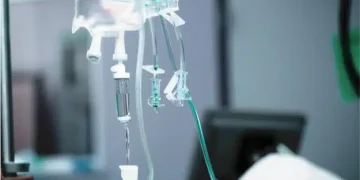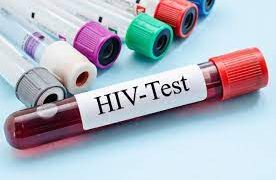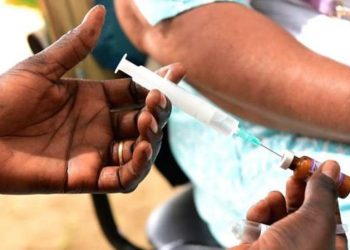The NDC COVID-19 Technical Team has written to the government with a list of recommendations which in their opinion can help in the fight against the spread of the coronavirus in the country.
“We present updated viewpoints based on the current dynamics challenging management of the virus for more successful outcomes. Our inputs continue to be based on the most credible medical knowledge and interventions,” the technical team said in its letter adding that “we emphasise again the need for placing urgent priority on their assessment for speedy implementation.”
This is the second round of recommendations presented by the NDC COVID-19 technical team to government.
Below are the recommendations:
1. Testing & Contact Tracing
We take note of efforts made by government to scale up testing and contact tracing efforts as part of measures to identify and isolate persons who have contracted COVID-19. Concerns about the comprehensiveness of the strategy remain, and we list below related recommendations and those for the broader aims of COVID-19 testing.
1.1. There remains a lack of clarity on the definition of the tertiary contacts category employed in the enhanced contact tracing program. The current understanding is that these individuals are identified not because of their known interactions with secondary contacts, but rather by virtue of their coresidence in localities where index cases reside. It also remains unclear if this extends to primary and secondary contacts. This clarification would allow epidemiologists and statisticians around the nation to evaluate the practical utility of the definition for the efficient identification of cases and use of testing resources, and to assess its marginal benefits in ensuring comprehensivity of contact tracing.
1.2. While the volume of testing has increased, we continue to recommend the adoption of additional testing strategies to expand the scope of Ghana’s testing program. The enhanced contact tracing model that has been used over the duration of the lockdown is still fundamentally rooted in a clinical approach to testing, as it is premised on index cases identified in facilities. A complementary program of community testing structured around the epidemiology of risk factors – as is presently in use in South Africa – would cast a meaningfully wider net and allow for the identification of cases resulting from missing links in the index cases’ transmission chains.
1.3. We encourage government communicators to desist from overinterpretation and extrapolation of the COVID-19 prevalence among the persons tested so far. Taking for granted the internal validity of the statistic, the narrow scope of the testing pool would appear to limit the generalizability of the prevalence. This is because the use of an overtly clinical approach as the basis for the tracing and testing may have resulted in the construction of a convenience sample rather than a representative one. Under those circumstances, it would be an error of external validity to conflate the sample-specific prevalence as an estimate of the true population-wide prevalence of COVID-19.
1.4. We urge government to take immediate steps to establish testing and processing facilities in each of the 16 regions in order to increase daily national throughput and to decentralize the testing process as much as possible in the interest of speed and efficiency. As part of these efforts, we recommend the establishment of a dedicated testing program for frontline health workers that allows for rapid assessment in a channel that is not constrained by the bottlenecks and backlog of the existing testing sites and processing laboratories.
1.5. It is important that government begin to roll out a strategy for consistent mass testing and aggressive contact tracing as part of its planning for the easement of the restrictions on movement in the designated hotspots. This must be done concurrently with the development of a plan to:
? Procure and undertake antibody testing in clinical staff and the general population as part of efforts to understand the true scale of the outbreak in Ghana and the local dynamics of immunity to the virus after infection.
? Procure reliable rapid testing kits and operationalize their use as a complement to the RT-PCR approach in order to increase access to COVID-19 testing and to boost the daily throughput as well.
? Engage ISO certified private laboratories in a strategic public-private program to increase national throughput as a means of scaling up testing by focusing on processing of voluntary tests or samples collected in the course of the contact tracing.
2. Community Impact Mitigation
The scenes reported at food distribution points in Accra and Kumasi over the course of the lockdown have been alarming, and threaten to defeat the underlying point of the social distancing protocols that have occasioned their necessity. The congested cues for cooked food, and its distribution in limited and overcrowded spaces, makes them a potential hub for COVID-19 transmission. Residents of the communities in question are low income, live in very close quarters, and have low rates of healthcare utilization; a combination of factors that would make local transmission within them as efficient as it would be hard to detect with a clinical testing model. We recommend urgent action to prevent this risk from manifesting itself as reality.
2.1. There is a pressing need for a consolidated strategic plan for food distribution to vulnerable groups including logistics, verification and evaluation protocols to ensure adequate coverage of the target population and accountability.
2.2. We recommend the immediate cessation of the distribution of cooked food, as the modality of its distribution presents a high contact situation that is ideal for COVID-19 transmission. The distribution of unprepared and nonperishable items is a preferable alternative because:
? It reduces the number of times persons must congregate to collect food, and reduces the number of members of a household that must be involved in the collection itself. This, in turn, reduces overall contacts during the lockdown period and opportunities for transmission.
? It allows households greater agency to manage their consumption and reduces wastage as a consequence of the inability to properly store excess cooked food. This has been a regular complaint by the target households, which we do not believe should be dismissed as “ingratitude”.
? Cooked food also presents a relatively higher risk of food poisoning or contamination if the food distribution chain is not properly managed and overseen.
2.3. Children in the most vulnerable and food insecure households (poorest of the poor) should also be targeted with nutrition supplements in order to stave off the risks of malnutrition and stunting.
2.4. The plight of head porters and other such economic migrants who are currently trapped in the lockdown areas without income or a guarantee of sustenance is a humanitarian crisis and a moral afront. We recommend the immediate development of an evacuation protocol for such persons. Such a protocol should involve double testing of candidates for evacuation, a mandatory pre-departure quarantine using empty facilities (e.g. at second cycle institutions, trade fair dome), and focused health education. These individuals may be leveraged as messengers to their communities on the risks and realities of COVID-19. The transportation logistics of this evacuation can take advantage of resources of the State Transport Corporation, the Ghana Armed Forces, and other state institutions. Organisations with capacity to aid this program should be actively encouraged to do so.
2.5. We draw your attention to the plight of persons with disabilities, and urge a strategic intervention contextualized to the various categories of persons within that community. They are doubly exposed to economic and social marginalization, and no specific programs appear to be in place to ensure their equal access to government interventions during this lockdown. This is especially true for those in this community who are homeless or abandoned, the children among them, and those who survive on already meager alms that are no longer available.
2.6. We also request an immediate probe into allegations of partisan consideration in the distribution of state-funded humanitarian aid. Such practices are unconscionable and morally reprehensible under the circumstances, and they are far beneath the dignity of the moment. A thorough investigation into these claims is absolutely essential to the preservation of trust in the goodwill of the state, which is an integral pillar of public confidence and buy-in for a crisis response.
3. Health System Strengthening
Concerns remain about the preparedness of Ghana’s health care system to adequately deal with a surge in clinical cases of COVID-19 while effectively protecting the frontline health workers and other supporting and auxiliary clinical staff. Despite repeated assurances to frontline health workers about the supply of PPEs, complaints persist in several regional and district hospitals about the unavailability of protective gear. Recent revelations surrounding a high profile COVID-19 death also suggest that the processes for procurement of certain palliative pharmaceuticals are progressing at a worryingly slow pace. We recommend the following for immediate action.
3.1. Distribution of PPE’s from central storage at regional and district hospitals to frontline departments and their staff must commence immediately to buttress the safety, confidence and motivation of clinical staff as the risk to them steadily increases.
3.2. Reconsideration of the specific definition of healthcare workers is emerging as a necessity. The present focus on staff with direct patient contact ignores the role of several categories of support staff in the case management process, the risks faced by auxiliary staff like janitors, and the modalities of COVID-19 transmission in that context. The risk of contracting COVID-19 extends beyond those professionals who have direct contact with patients, and planning for protective equipment should reflect that and make provisions for the various staff categories in accordance with their respective risk exposure.
3.3. An accelerated procurement protocol must be established for the supply of COVID-19 related pharmaceuticals to maximize the efficiency of care and avoid costly delays in access for patients. This would also support the flexibility of the clinical response component of Ghana’s fight against COVID-19 by creating a mechanism that allows for the rapid inclusion of emerging therapies with proven efficacy into Ghana’s treatment protocols. The rapid evolution of knowledge and perspectives about the virus and its physiological effects demands this kind of dynamic range in Ghana’s clinical response.
3.4. Transparency in patient management is also key in reducing misconceptions about COVID-19 and the stigmatization of its sufferers and survivors. We recommend to government the full disclosure of the locations of all isolation and treatment centers around the country, as well as their respective capacities. Greater public knowledge of these locations may boost care-seeking behaviour as prospective patients will be reassured of treatment near their homes and loved ones or, at least, in their region or district of residence.
3.5. We reiterate our pressing recommendation from our previous document for the immediate settlement of NHIA debt to providers, the suspension of capitated outpatient payments, and the inclusion of COVID-19 testing and treatment to the NHIS’ list of essential health benefits. These will provide demand-side incentives for proactive care-seeking behavior, and eliminate the risk of perverse incentives created by supply-side cost-sharing. Altogether, this will afford health facilities greater flexibility and autonomy in preparing and equipping themselves to respond to the COVID-19 threat.
4. Health Education
It remains clear that information and education about the reality and risks of COVID-19 have failed to penetrate the public consciousness to a meaningful degree. There remains widespread doubt and denial of the virus itself, and skepticism about the necessity and usefulness of the public health interventions that have been enforced. This, if not addressed immediately and aggressively, will fundamentally undermine the national effort to flatten the pandemic curve.
4.1. A strategic plan for health education communication by Information Services Department vehicles in rural areas using trained health volunteers must be prioritized and adequately resourced. This plan should also pursue auxiliary resources available from political parties, religious organisations, and other such bodies who have existing infrastructure for information dissemination in the rural heartland.
4.2. Efforts to engage with and leverage the influence of traditional rulers must be accelerated. The cultural context in many rural areas reposes trust and a great deal of veracity in the judgement and pronouncements of local rulers, and the continued delays in creating a strategic national plan for harnessing this invaluable resource is hindering the penetration and acceptance of messaging around COVID-19.
4.3. It is important to be mindful of the fact that didactic information dissemination is not as effective as direct engagement with communities and their cultural and social leaders. Blanketing communities with messages carried by megaphone will not be sufficient to ensure practical appreciation and understanding of the issue. This must be the operational framework for the entire health education effort.
4.4. The usefulness of facemasks should be communicated in an objective and scientifically sound manner that is consistent with the best evidence about their effectiveness in reducing the likelihood of passing on or contracting the virus. There should be clear communication about the efficacy of the various commercial and home-made masks available, and on which specific types offer meaningful protection. This is to avoid the complications of false security among the general public. With respect to fabric masks in particular, it is important to note the paucity of evidence as to their protective effect and their largely anecdotal effectiveness in reducing viral transmission even though they do limit the spread of droplets from coughing or sneezing.
4.5. The issue of stigmatization is an emerging concern as risk perception increases, misinformation spreads, and more people in the community are affected directly or indirectly by the virus. The anxiety and panic among the public is translating into negative social attitudes, perceptions and biases against COVID-19 patients and their families. Health workers are increasingly experiencing this as well. We take note of the recent firsthand account given by a recovered patient at a media briefing, and wish to encourage government to persist in that course as much as possible while respecting the right to privacy of patients and families who may prefer to be excluded.
4.6. Coping with the stress and anxiety of the health risk caused by COVID-19 and its attendant economic devastation is placing a tremendous burden on the mental health of Ghanaians. Such sustained stressors are themselves known to have a serious adverse impact on health. We urge government to consider the establishment of a dedicated hotline for individuals in need of counseling or support in these difficult times, or to identify, approve and advertise qualified persons and organisations that are already filling this gap.
5. Data Release & Information Management
Consistency and factual accuracy are critical to preserving public trust in the management of the crisis. The data released from the Ghana Health Service and Ministry of Information must have epidemiological relevance to the COVID-19 outbreak, it must be presented in a consistent manner to allow for trend analysis by third-parties, it must be logically consistent, and it must have practical utility. We note concerns on all those fronts.
5.1. We recommend the scheduling of a fixed time for daily updates on the COVID-19 situation in Ghana to avoid the creation of an information vacuum that leaves the public vulnerable to speculation and false information. This refers to the updates on confirmed cases and the media briefings by government. These briefings should be focused on communicating the views of the public health, clinical and social welfare experts on the state of affairs. The use of the platform as an occasion for the presentation of donations, in particular, is unnecessary and is discouraged.
5.2. The sequencing of tests results by the actual sample dates is an important piece of information to assist in the determination of the true trend in confirmed cases, as the universally acknowledged backlog may bottleneck data releases in such a way as to give skewed data that better reflects timing of information publication than it does the actual trend in case emergence. The use of the former as the latter greatly jeopardizes our understanding of the dynamics of the disease within the population and renders it practically irrelevant for the interpretation and projection of the trajectory of COVID-19 in Ghana.
5.2. We request a clarification from government on the matter of test results from private institutions and whether those are included in the national tally. A breakdown of testing and results by facility and ownership type would be a useful statistic for understanding the pattern of care-seeking behavior during the pandemic and doubles as a verification of private hospital reporting.
5.2. We demand from government an immediate explanation for the drop in confirmed cases under the routine surveillance category between the April 13 (292) and April 14 (268) update. The disparity of 24 cases has now encoded systematic error in the national tally of cases, as the April 15 update added on 5 new confirmations to the total confirmed cases on the basis of the evidently inaccurate April 14 tally of 636. This begs an urgent review of the data management and dissemination process. This must be explained thoroughly and publicly corrected immediately.
5.3. An emerging concern in the management of information is the public understanding of the rules around funerals and burials. This has been highlighted by recent complaints by staff at various mortuaries about overcrowding of their morgues as families are either unsure of whether burials are covered by the restrictions on movement or choosing to delay funerals until the lockdown is lifted. This is a sensitive topic grounded in our sociocultural perspectives as a people, but it is important to consider the implications of overcrowded morgues given the harsh realities of the weeks ahead. We recommend urgent clarification of the matter, and subtle encouragement to families to consider early burials in advance of funeral rites and memorial services to be conducted after the lockdown.
source: Class FM Online









![Drake helps a group of African kids go viral [Watch]](https://thepostghana.com/wp-content/uploads/2020/04/drake-2019-pxn-billboard-1548-1586360114-1024x677-360x180.jpg)






































